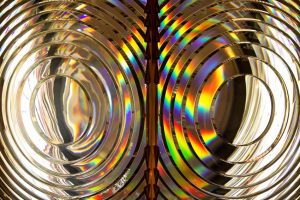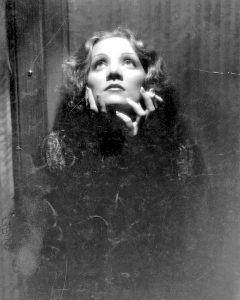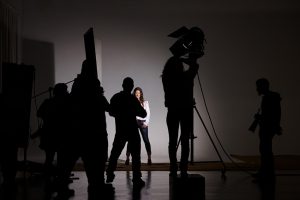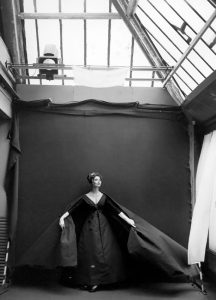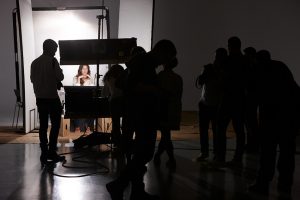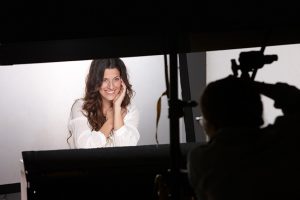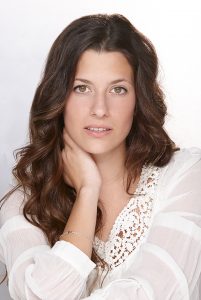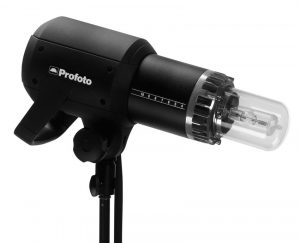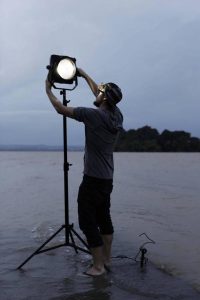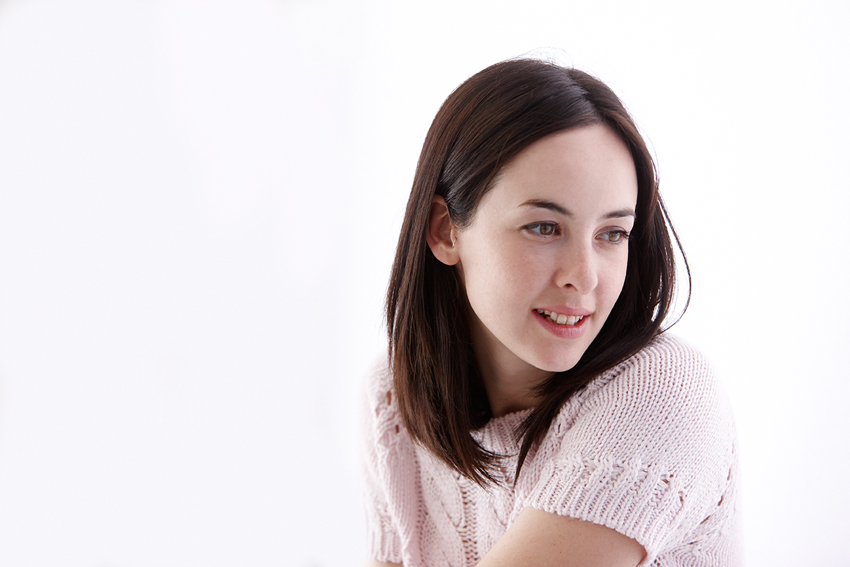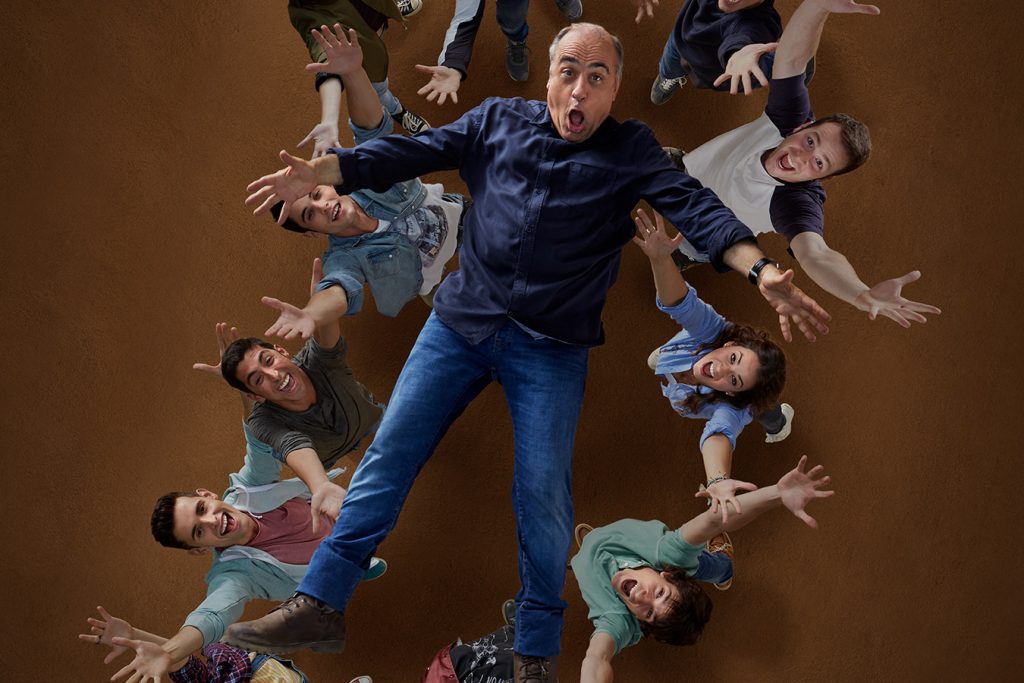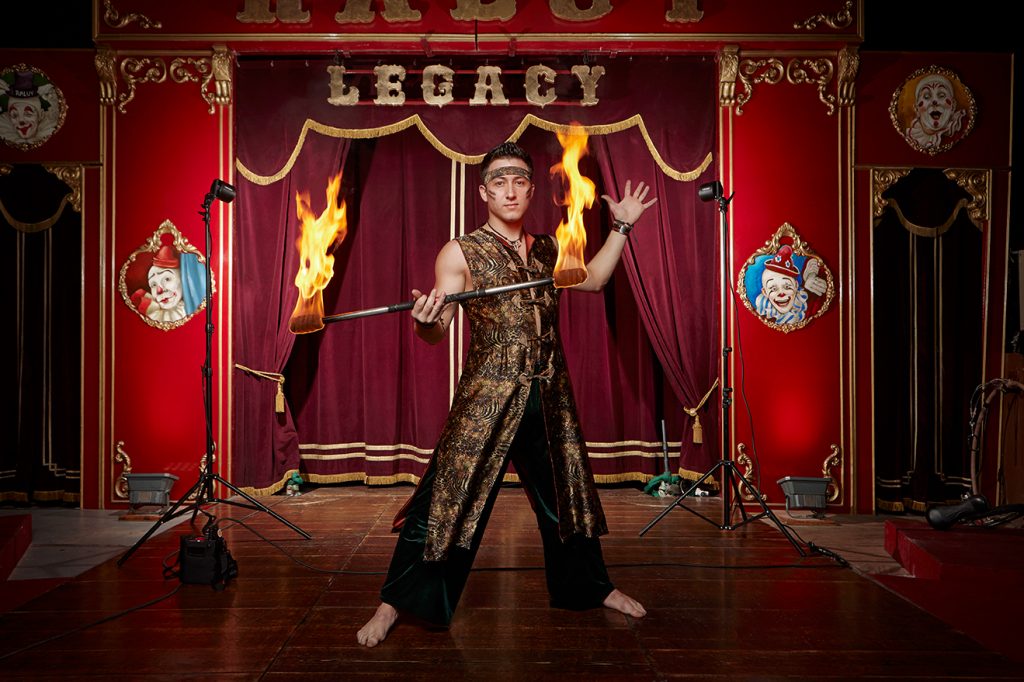The Sun is the usual natural light source with which we see and photograph, since with the light of the Moon, few photos are taken in relation to those taken with the Sun. But when we are working in a photographic studio with artificial lights … how do we emulate the sun? The techniques are varied, but if we want to get a very fine line in the illumination, we must resort to an accessory with a Fresnel lens.
In theory the sun emits “parallel rays” and the best photographic accessory to emulate this direction of light is to have a Fresnel lens in front of the light source. In another post I already talked about this magnificent accessory, but we can repeat that its essential feature is that the light beam of the flash acts like the sun, since by using an optical element, it makes the light rays – instead of being dispersed – are projected parallel.
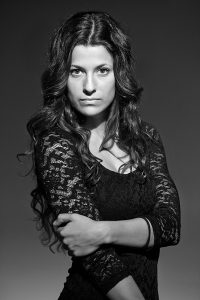
The Fresnel lens, named after its inventor Augustin-Jean Fresnel, is a lens design that allows the construction of large aperture lenses with a short focal length without the weight and volume of material that should be used in a conventional lens design. It is a type of lens used in headlight flashlights, traffic lights and also in cars. The particularity of these lenses is that they can be of large dimensions without excessive volume or weight as a conventional lens would have. For this purpose, maintaining the radius of curvature of a conventional lens, but fragmented into rings, the same effectiveness is achieved, but with less thickness and a staggered appearance.
@ Richard and Pam Winegar
Fresnel lenses are generated from a plano/convex lens and their task is to make light behave in the same way as when it passes through these more robust lenses. The light rays arriving parallel to the optical axis are concentrated in a focus, while the light coming out of that focus and passing through the lens comes out in parallel rays as a “light pipe”.

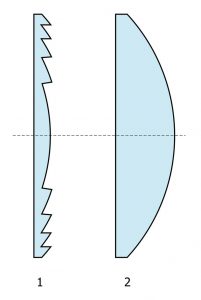
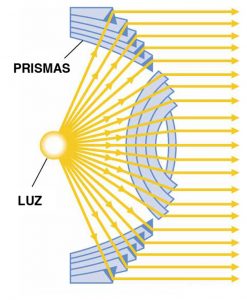
Fresnel lenses have been developed for application in film, television and theater, although they have also been used in photography. The first lamps were of continuous light and from their origin the inner lamp of the reflector can move perpendicularly to the lens surface. In this way, the light beam can be directed from a “spot” position, which generates a more closed and harder light, to a “flood” position forming a 60º fan.
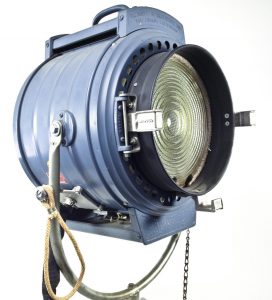
Bardell & McAlister 9.5 2K Fresnel
The Fresnel generates pronounced shadows, a vigorous, sharp and well-defined clipping effect. The transition from the luminous part to the dark part is very abrupt and dry and the luminous intensity is maintained for some distance because the luminous rays are more parallel. There is no half-light, i.e., no transition between areas in light and those in excess. The problem with using such harsh, direct light is that it can overemphasize the texture and modeling of facial surfaces. It produces a high contrast illumination and if more than one spotlight of this type is used, there will be cross shadows that are not very pleasant.
This form of lighting became very popular in Hollywood in the 30’s and 40’s through photographers like George Hurrell. Until 1932 he was the Head of the Portrait Department at MGM, a position he left to set up his own studio that operated until 1938. In the 1940’s he moved to Warner Brothers Studios and finally to Columbia Pictures before emigrating to New York.
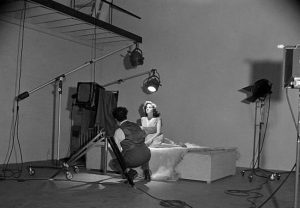
© George Hurrell
In 1932 Josep von Sternberg films for Paramount Pictures, “The Shanghai Express” starring Marlene Dietrich. A capture from the film becomes the iconic image of what was called the “Paramount” style or also called the “Butterfly” style because of the butterfly shape produced by the nose shadow.
In today’s image, this procedure was followed, that is, using a single light source, frontal to the axis of the model’s face and somewhat elevated above the camera plane. Lighting along the lens axis reduces the texture and modeling of the lens, but is useful to disguise wrinkles or avoid unwanted shadows. The cheekbones stand out a lot and care must be taken not to set the light source too high, otherwise the overall look can be very exaggerated, leaving the eyes sunken in the shadow and the cheekbones excessively enhanced.
This hard light scheme is achieved with great success if the light source is far away from the subject and at the same time is small and of parallel rays. Hence, the Fresnel has been for decades, a star accessory to transmit glamour in Hollywood studios and around the world, at least until the 1950s.
Fashion class GrisArt / Barcelona studios
This type of Paramount scheme is sometimes accompanied by a second light source below the camera to act as a secondary or fill light to reduce the contrast of the scene. It is usually a couple of EV below the main one so as not to make the drawing of the shadow disappear, but to give more brightness and luminosity to the eyes.
Hurrell in his studio
In Hurrell’s time, continuous light bulbs were used, usually tungsten lamps, whose color temperature is 3200ºK. These lamps were energy-intensive and also produced suffocating heat if several were used at the same time.
Bardwell and McAlister 1940 Keg Light
From the 1950s onwards, studios also began to work with natural light, mixing sunlight with continuous light photos. The photographs were in black and white and there was no need to worry about color. In addition, when working with large format cameras, they could have a loss of light due to stretching of the bellows, so high power was needed, which was achieved by mixing the spotlights with natural light.
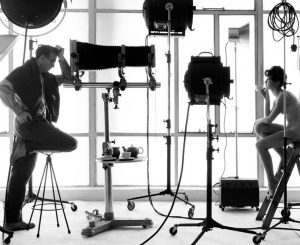
The iconic Fashion photographer and Portrait Artist, Richard Avedon, photographed Suzy Parker in a Dior evening gown in 1956 and used the technique described.
Other great portrait artists of the 50’s and 60’s like the British David Bailey made countless portraits of the Beatles with this Paramount hard light scheme. One of his famous portraits was of the Kray brothers, gangsters in London during that decade. Although he probably used an umbrella and not a Fresnel.
From the 50’s onwards, the electronic flash developed by Edgerton at MIT became popular and since then lighting has changed a lot. Fresnel lenses can also be used with flash, but it is with HMI cinema lights that the Fresnel will find its definitive place. By producing a hard, directional light, it can simulate the sun on a cloudy day or can be used as a fill light. For this, it should not be a hard, direct light, but should be screened by a canopy, such as those of Avenger.
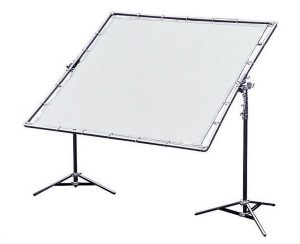
The canopies are rigid frames with various translucent fabrics stretched over them, and as the light from the HMI spotlight passes through, it is dispersed and diffused, increasing the apparent size of the light source, thus generating a soft, enveloping light. An Avenger clamp system allows the pallium to be turned very quickly and safely.
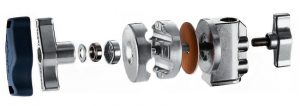
Arri is a very prestigious brand of Fresnel HMI and with them we made the practice that now concerns us. We use 1200, although there are 1800, 2.5/4 K, 12K/18K.
The set at Barcelona Studios in Sant Adriá del Besos is very large and we were able to work in great comfort. The model was placed away from the white background and therefore the background was degraded. As we place the Fresnel slightly to the right, we decide to put a white reflector on the left to decrease the contrast somewhat. The resulting photograph, at the beginning of the post, gives an intense and dramatic character.
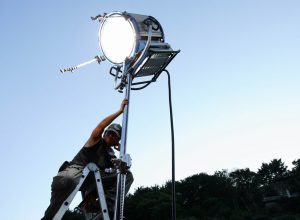
Arri lighting
Fresnel diffuser
Barcelona Studios
In three previous posts I already discussed how to make a low contrast set with Kinoflo and/or leds, but here I wanted to explain how in this case a Fresnel from behind the canopy produced a very nice bright light.
http://off-camera-flash.com/blog/2013/01/kino-flo/
http://off-camera-flash.com/blog/2012/07/iluminacion-con-leds-1/
http://off-camera-flash.com/blog/2012/07/iluminacion-con-leds-2/
The possibilities that today’s studios have in terms of lighting equipment are immense and we are not going to go into them now, but we can add something about the most current Fresnel.

© Spring Studios
A recent innovation is the HMI from Profoto. Swedish brand focused on flash that offers for some time now HMI heads for the entire system of Protofo softboxes, snoots, etc.,.
ProDaylight-HR
Finally, the Zylight F8 LED Fresnel units have appeared on the market, which, through LEDs, reach the performance of a traditional 650 watt unit, but much more compact!
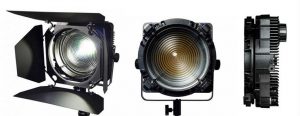 Ylight F8 LED Fresnel
Ylight F8 LED Fresnel
What does the immediate future hold for us ?
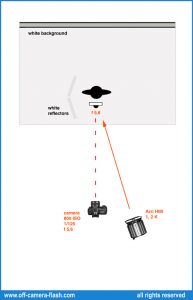 Lighting scheme
Lighting scheme
All rights reserved. © Isarrualde Photography
No part of this publication may be reproduced in any form or by any means without the written permission of the author.
